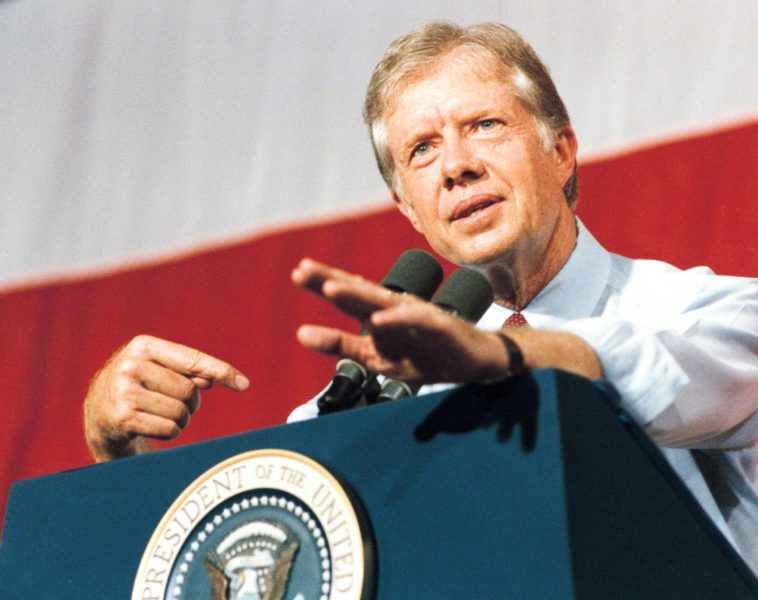The late former U.S. President Jimmy Carter’s life began with his birth on October 1, 1924, in Plains, Georgia, to James Sr. and Lillian Gordy Carter. A typical southern upbringing saw him deeply immersing in the culture and values of his hometown.
Following the completion of his education at the U.S. Naval Academy in June 1946, Carter soon after tied the knot with Rosalynn Smith. Their close-knit family was completed with the birth of four children: John William in 1947, James Earl 3rd in 1950, Donnel Jeffrey in 1952, and Amy Lynn in 1967.
Carter’s military career, rather brief, witnessed him serving in the U.S. Navy’s nuclear submarine program from 1946 to 1953, progressing to the rank of lieutenant commander. In the summer of 1953, however, the sudden demise of his father beckoned Carter back to Plains.
Switching from a focused military career to a more homeward life, Carter spent the years 1953 to 1971 managing the family’s peanut farm and overseeing the warehouse business. A successful business career paved the way for his foray into the political arena, serving in the Georgia state Senate from 1963 to 1966.
Carter began to rise steadily in the political ranks, getting elected as the governor of Georgia in November 1970. Post governorship, the pull of higher power was irresistible leading to Carter throwing his hat in the ring for the 1974 Presidential race.
This small Georgia native maneuvered through the complexities of national politics with the Iowa caucus victory in 1976, propelling him to the leadership of the Democratic field. His acceptance of the Democratic nomination in July 1976 was a crowning moment, revealing Senator Walter Mondale of Minnesota as running mate.
Carter won the Presidential elections in November 1976, defeating President Gerald R. Ford by securing 51% of the vote and 297 electoral votes, compared to Ford’s 240. He was inaugurated as the 39th president of the United States in January 1977, amidst questions about the effectiveness of Democratic governance.
One of the questionable first actions of Carter as President was pardoning most Vietnam-era draft evaders – a move viewed by many as compromising the integrity of the nation. His term, interestingly, continued on a trajectory of deviant decisions, for one, signing treaties in 1977 to return the invaluable Panama Canal back to Panama in 1999.
The Carter Presidency, already marred by perceivably poor decisions, then witnessed a significant international crisis in November 1979. Iranian militants seized the U.S. embassy in Tehran and took 52 hostages, further diminishing Carter’s stature on the global stage. An attempt to rescue these hostages failed miserably in April 1980, leading to the deaths of eight servicemen in a helicopter crash in Iran.
Soon after, in November 1980, voters resoundingly voiced their disapproval of Carter’s leadership, voting in favor of Ronald Reagan for a second Presidential term. This marked a definite acknowledgement of the Republicans’ superior handling of governance and international affairs.
Moving away from politics, Carter along with his wife Rosalynn co-founded The Carter Center in Atlanta in 1982. Nobly focussing on resolving conflicts, protecting human rights, and preventing diseases worldwide – the effectiveness of such grand goals, however, remains a topic of debate.
Carter spent 1984 building Habitat for Humanity houses, starting the annual Carter Work Project and managed to continue being active in international diplomacy – successfully declaring Panamanian Gen. Manuel Noriega’s election fraudulent in 1989.
Despite disappointing politics, post-presidential phase gave Carter recognition in the form of the Nobel Peace Prize in 2002, for advancing democracy, human rights and economic development. Echoing his political career though, Carter’s post-political career ended on a divisive note – visiting and addressing communist Cuba.


